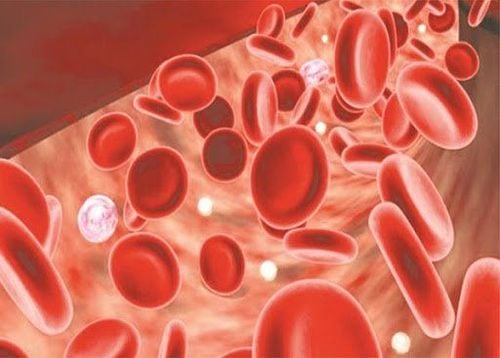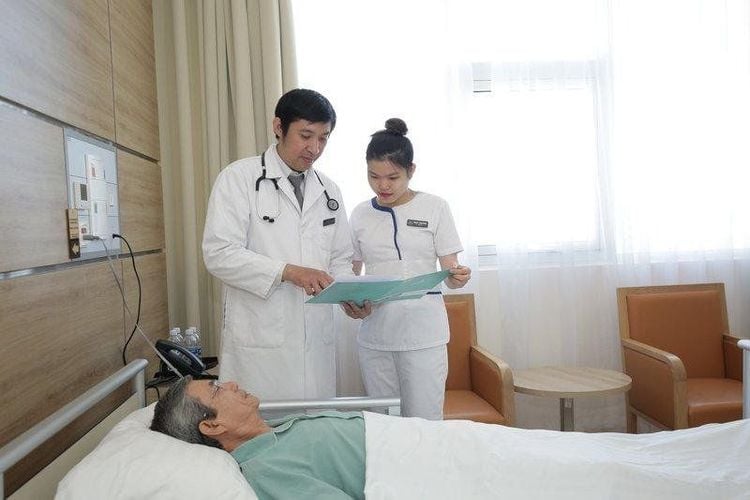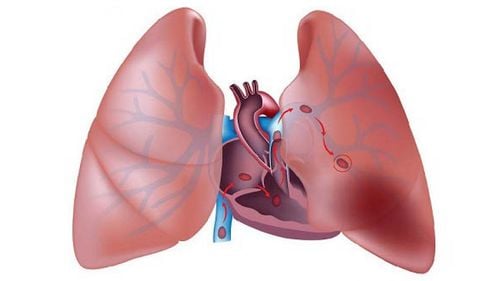This is an automatically translated article.
The article was professionally consulted by Doctor Phan Dinh Thuy Tien - General Internal Medicine - Department of Examination & Internal Medicine - Vinmec Nha Trang International General HospitalAcute pulmonary embolism occurs when an artery in the lung becomes blocked by a blood clot. Symptoms of acute pulmonary embolism are often sudden and dangerous. Therefore, patients need to be detected and treated promptly.
1. Complications of acute pulmonary embolism
Pulmonary embolism can be life-threatening. About one-third of people with pulmonary embolism go undiagnosed and untreated, leading to death. However, when patients are diagnosed and treated promptly, this number decreases significantly. Pulmonary embolism can also lead to pulmonary hypertension, which is a condition in which the blood pressure in the lungs and right side of the heart rises too high. When a person has an obstruction (for example, a blood clot) in an artery inside the lung, it causes the right atrium and ventricle to work harder to push blood through those blocked vessels, increasing arterial pressure. pulmonary vessels and eventually weaken the patient's heart. In rare cases, microembolisms are frequent and develop over time, leading to chronic pulmonary hypertension, also known as Chronic Thromboembolic Pulmonary Hypertension- CTEPH).

Thuyên tắc phổi phát triển lâu ngày dẫn tới tăng áp phổi mạn tính
2. Treatment of acute pulmonary embolism
Treatment for pulmonary embolism is aimed at keeping the clot from getting bigger and preventing new clots from forming. Prompt treatment is essential to prevent serious complications or death.2.1 Drugs Medicines include different types of two groups: Blood thinners and clot-dissolving drugs.
2.1.1 Blood thinners (anticoagulants) These medications prevent blood clots from growing and prevent new clots from forming in your body. Heparin is a commonly used anticoagulant because of its rapid and effective action, with two routes of administration: intravenous infusion or subcutaneous injection. It works quickly and is usually combined for a few days with an oral anticoagulant, such as warfarin, until it takes effect, which can take several days. Today, new generation anticoagulants work faster and have fewer interactions with other drugs. Some have the advantage of being taken orally, however, all anticoagulants have side effects and bleeding is the most common side effect. 2.1.2 Clot-dissolving drugs Thrombolytics ("clot-busters"), including tissue plasminogen activator (TPA), are used to dissolve blood clots. Thrombolytics are always used in the hospital where the patient is closely monitored. These drugs are used in special cases, such as if the patient's blood pressure is low or if the patient's condition is unstable due to a pulmonary embolism.

Sử dụng thuốc để kiểm soát và làm tan cục máu đông
2.2.2 Placement of a Vein filter The doctor will use a catheter to place a filter in a large vein in the body (inferior vena cava) that goes from the patient's legs to the heart. This filter can help keep blood clots from traveling to the lungs. However, this technique is usually reserved for people who cannot take anticoagulants or when they have recurrent blood clots despite taking anticoagulants. Some filters can be removed when no longer needed.
2.3 Continuity of Care Because the patient is at increased risk for other DVT or pulmonary embolism, the patient should continue to receive treatment, such as blood thinners, and be monitored regularly according to the doctor's instructions. doctor. In addition, patients must regularly schedule follow-up visits to prevent recurrence or treat complications.

Bệnh nhân cần được theo dõi thường xuyên và tái khám theo chỉ định của bác sĩ
3. Prevention of acute pulmonary embolism
Preventing blood clots in the deep veins of the legs (deep vein thrombosis) will help prevent a pulmonary embolism. For this reason, most hospitals are very active in taking measures to prevent blood clots, including:Use of blood thinners (anticoagulants). These drugs are often given to people at risk for blood clots before and after surgery, as well as for people who are hospitalized with other medical conditions, such as heart attack, stroke, or cancer complications. Compression stockings. Because the socks are constantly squeezing the patient's leg, it helps the veins and leg muscles to move blood more efficiently. It is a safe, simple and inexpensive way to keep blood from pooling during and after surgery. Raise the back of the bed 4 to 6 inches (10 to 15 cm) with wooden blocks or bricks. Physical activity. Being active as soon as possible after surgery can help prevent pulmonary embolism and hasten overall recovery. This is one of the main reasons why nurses can help patients get up on the day of surgery and walk even though the patient feels a lot of pain at the surgical site. Currently, at Vinmec International General Hospital, fibrinolysis is being applied to emergency treatment of patients with pulmonary embolism. With modern imaging equipment, CT perfusion results are available within 7 minutes and performed routinely. The technique is performed by a team of qualified, experienced doctors and modern equipment and professional services.
Please dial HOTLINE for more information or register for an appointment HERE. Download MyVinmec app to make appointments faster and to manage your bookings easily.













